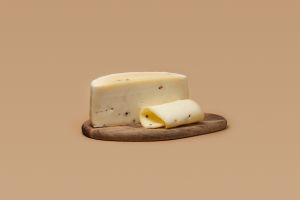In supermarkets, pet stores, and aquariums.
There is never a shortage of such a splash of stunning colors: some like the subside red haze body clad in the neon crown, some like the Western peacock clad in blue blood dragon scales.
They have invariably perched alone in round or square containers, like fairy tales of young girls imprisoned in ivory towers.
They are the Siamese fighting fish.
The wild Siamese fighting fish is small and dull in color, turning red only when agitated.
The fins are also very short, and they often inhabit slow-moving waters such as lakes and rice paddies in the southeast subtropical region, feeding on zooplankton, crustaceans, tsetse, and other aquatic insects.
The Siamese fighting fish is sexually dimorphic, with females being lighter in color and having smaller caudal fins.
The Siamese fighting fish, as a member of the climbing bass family, is able to live in shallow water.
Some even in puddles of 3-7 cm, thanks to a special organ, the "suprasellar apparatus", which is a mucosal tissue formed by the enlargement of the upper gill bone of the first-gill arch, or the upper gill bone and part of the clypeus.
It is a mucosal tissue formed by the enlargement of the upper gill bone of the first-gill arch, or the upper gill bone and part of the lingual jaw bone, between which there are abundant microcapillaries.
They can breathe oxygen in the air directly through the gills, which gives them the ability to survive in turbid or low dissolved oxygen waters without dying even after a short time out of water.
However, the special structure of the gills also determines that the fighting fish can only survive in shallow water and face the risk of drowning if they cannot breathe air.
Siamese fighting fish are fierce and aggressive, with a strong sense of territory, especially in males, and in small areas such as fish tanks where there is not enough room to escape.
The weaker party is often attacked and killed. Fortunately, Siamese fighting fish have a strong ability to heal themselves, as long as they are not fatally wounded.
Even if their entire caudal or ventral fins are ripped off, they can heal quickly and grow new fins within a few months.
During the breeding season, the male will build a bubble nest at the surface for the female to spawn, then the male will release the sperm and deliver the fertilized eggs to the bubble nest with his mouth.
While the female will wait for the opportunity to steal the spawned eggs, and the male will violently attack the female to drive her away when he finds out.
When it comes to Thai fighting fish, the first thing that comes to mind is the display-type fighting fish with flowing fins and colorful fins, such as the horse-tailed fighting fish, and the lion king fighting fish.
And the half-moon fighting fish, or the short-tailed fighting fish, which are often used for gambling.
These "fighting fish" are actually made from Siamese fighting fish, which have been artificially selected, improved, or crossed with other closely related species of fighting fish for more than 100 years.
Fighting fish are omnivorous and carnivorous species, so you can feed them a variety of baits and try not to make their recipes too monotonous.
Usually, artificially dried bait with complete nutritional composition and clean and hygienic is the necessary bait for most people to feed fighting fish.
However, since most of these baits are bacterial and can easily infect fish, they can only be used as a seasoning for the fish's taste.


